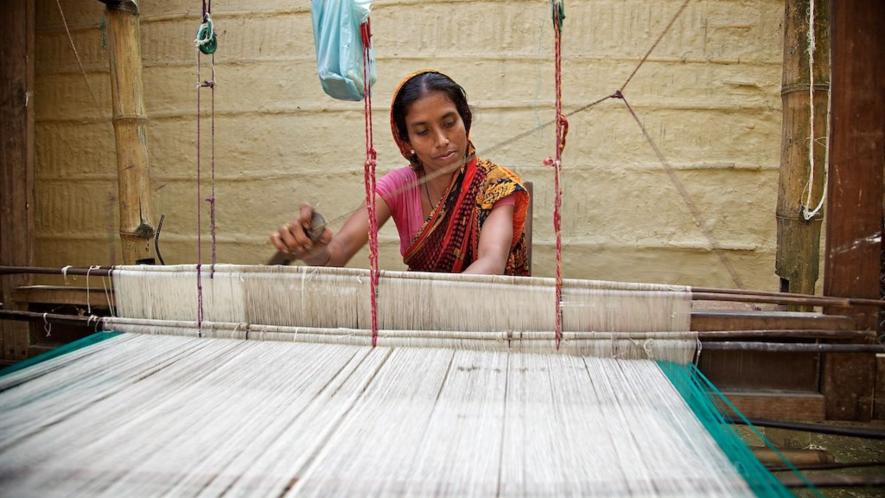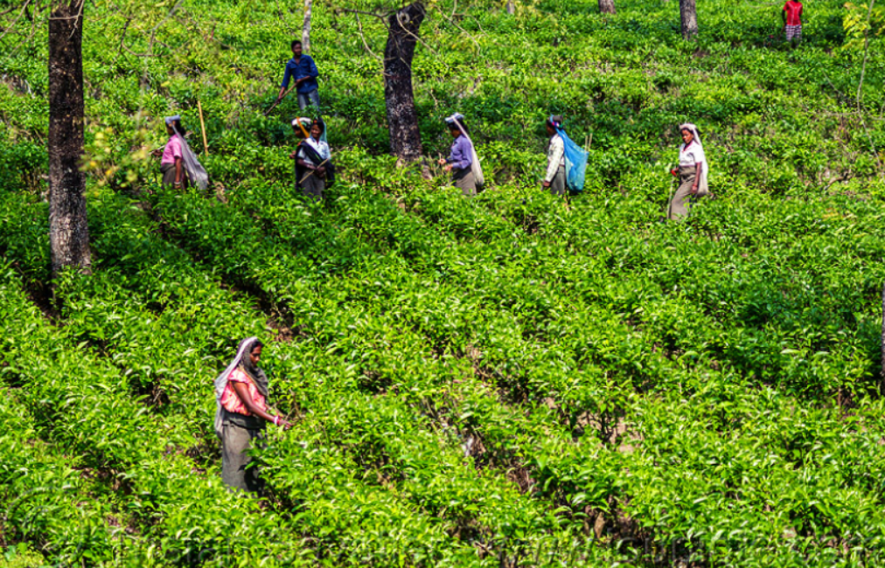Bengal: Handloom Weavers of Nadia, Hooghly on Verge of Extinction

Image Courtesy: Flickr
Kolkata: The first leg of the Autumn Festival Season in West Bengal is underway, starting with Durga Puja and Bijoya Dashami. According to industry estimates, this festival, one of the world's biggest street celebrations, reportedly contributes 10% to the state's gross domestic product, at Rs 13.16 lakh crore.
However, a country-wide economic slowdown has cast a shadow over this annual festive event.
As per industry body Assocham's 2023 report, West Bengal's festival economy was projected to surpass Rs 1.5 lakh crore. This year, the state has is struggling to reach the Rs 1 lakh crore mark during the season, per initial estimates.
The weavers of Dhania Khali, Begumpur, Guptipara, Aatpur in Hooghly district and Shantipur and Fulia in Nadia district are on the verge of extinction due to dwindling product demands and a lack of meaningful government support. As more women in the state opt for western clothing over traditional handwoven sarees, both districts, each with a more than 1,000-year-old weaving tradition, are grappling with reduced product demand, say industry watchers.
In Begumpur, Newsclick spoke with many elderly weavers who are still in the profession but are reluctant to have the next generation follow in their footsteps. They mentioned that weaving a 12-hand saree takes two days, and they earn only about Rs 150 to 200 for their labour. On average, they receive about Rs 80 to 90 a day for their hard work. Begumpur had around 35,000 handlooms in operation in the past, but that number has now dwindled to 500. The labour cost per saree has decreased from Rs 230 before COVID-19 to Rs 180.
Somen Mahata, a leader of the Nadia District Weavers Association, told NewsClick that subsidies were provided to weavers during the Left Front era (before 2011), and a pension scheme was in place. Both the state and Central governments shared these subsidies. However, the Mahatma Gandhi Bunkar Yojna has now been discontinued, increasing the hardships faced by handloom weavers.
As a result, the Autumn Festival this yeart has been barely remunerative for the 1.5 million textile workers in the state, according to 2018 estimates from the Department of Micro, Small, and Medium Enterprises and Textiles, Government of West Bengal. The three largest wholesale markets in the state - Harisha Haat in North Kolkata, Mangla Haat in Howrah, and Metiburuz - have all seen a third of their usual sales, especially following demonetisation.
According to Asadulla Gayen of the West Bengal Tailors Association, the effects of demonetisation, digitisation, and direct sales on online platforms have significantly impacted the traditional supply chain in the state. The Autumn Festival and Pongal are two crucial events contributing to the state's textile revenue.
Even weavers in Shantipur and Fulia of Nadia District, who work on a contract basis for retailers, have seen a decrease in sales. Their profit margins have shrunk instead of the nearly 15% yearly growth witnessed in the past three decades. Thread prices have soared, and both handloom and powerloom workers are operating below their maximum capacity.
The traditional "khat-khat-khat" sound emanating from handloom weavers' huts in Shantipur, located approximately 100 kilometres from the state capital of Kolkata, is fading. Shantipur is renowned for its weaving skills, and its traditional weavers produce Shantipur sarees, highly sought after for their unique weaving patterns and quality.
Nadia dis home to about two lakh weavers, with approximately 40% of them belonging to Scheduled Castes. The traditional weaving community is now on the brink of extinction, as weavers are dismantling their looms en masse and turning to migrant work in Kerala, Tamil Nadu, Mumbai, and Karnataka, according to Soumen Mahato of Nadia District's Tant Shramik Union.
In the past 10 years, wages have seen an increment in nearly every profession except the weaving industry. Daily wage rates have plummeted from Rs 160 to Rs 60-70 in the last decade. A handloom worker who works more than 12 to 14 hours straight can produce only one saree daily, resulting in prevailing wages of Rs 60- 70.
Bengal: Tea Garden Workers Launch Stir to Demand 20% Puja Season Bonus

Kolkata: Lakhs of tea garden workers have started an agitation in the Darjeeling Hills and the Terai and Dooars regions demanding a 20% bonus before the onset of the puja season in the state. Traditionally, in the state’s tea estates, bonus issues of the Terai and Dooars are discussed every year before the onset of the season, following which the bonus issues of the hill estates are settled.
On October 5, the first round of discussions on bonus payments with tea garden unions began in Kolkata. After three rounds of talks, tea garden owners were reportedly adamant on paying a bonus @15% of basic wages. Even tea gardens that are financially stable and have the ability to pay 20% bonus are thinking of paying only 15% bonus at a time when inflation is biting hard, said some union leaders.
Saman Pathak, former Rajya Sabha MP from Darjeeling, and leader of the Joint Forum of Tea Workers told NewsClick that the tea garden owners had shown “high-handedness” while discussing the bonus issue and their “exploitative outlook” was hurting tea workers before the festival season. “It is a question of the human dignity of the tea workers”, he added.
Meanwhile, unrest has begun in various tea gardens of Jalpaiguri and Alipurduar districts. In Alipurduar, the management of Dalgaon tea estate took a unilateral decision and has decided to pay 20% bonus to its employees.
More than one million people in North Bengal, who are directly or indirectly dependent on the tea garden economy of the region, have been struggling with their livelihoods. Since the regime change in the state in 2011 (from the earlier Left Front to the Trinamool Congress now), the constant refusal of the West Bengal government to comply with the Minimum Wages Act and statutory labour regulations, even in the recent Tripartite Meets, has worsened the workers’ plight.
While the price of everything is rising, tea garden workers are struggling to make ends meet. Even starvation-related deaths have reportedly occurred due to the withdrawal of assistance to workers of closed tea gardens. Many recall that it was the erstwhile Left Front government that had started the assistance scheme in the state.
However, hunger and poverty-related deaths of tea garden workers are not new and have been reported for close to a decade. But the situation seems to have reached a tipping point now, say union leaders.
Tea plantations in the region are spread over 97,280 hectares (240,400 acres). The region produces 226 million kilogrammes of tea, accounting for about a quarter of India's total tea crop. There are 154 gardens in the Dooars alone, out of 283 tea gardens in North Bengal that employ 3.5 lakh workers.
Tea cultivation in the Dooars was primarily pioneered and promoted by the British Colonial rulers, but a significant contribution was made by Indian entrepreneurs. While Goodricke and Duncan operate a majority of tea gardens in the Dooars.
Prafulla Lakra from the Jalpaiguri Sadar Tea Workers Union, who is also the regional secretary of the Centre of Indian Trade Unions (CITU), told NewsClick that the region's tea workers were being exploited. “We depend on festival bonus payments for our sustenance. If the management thinks they can get away by paying us less bonus, then we will protest more intensely,” he added.
"The tea industry is suffering from absenteeism. In Darjeeling district, where there is scope for 11 million kg of tea production, there is now production of 6.5 million kg of tea, because most male workers have gone out of the state to work as migrant workers in other states. Women now comprise over 80% of the tea workers," Lakra said.
RS
En.wikipedia.org
En.wikipedia.org
No comments:
Post a Comment